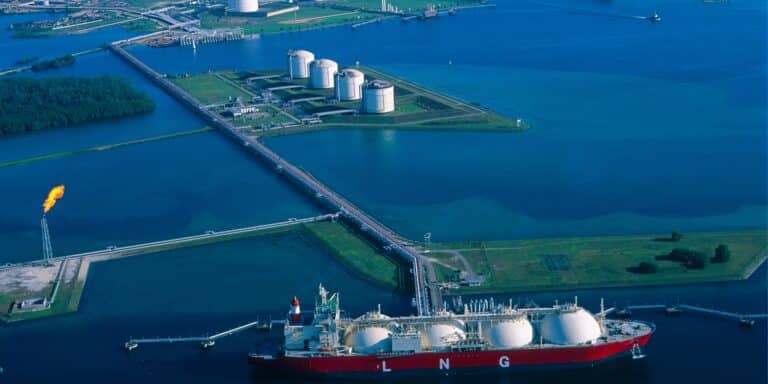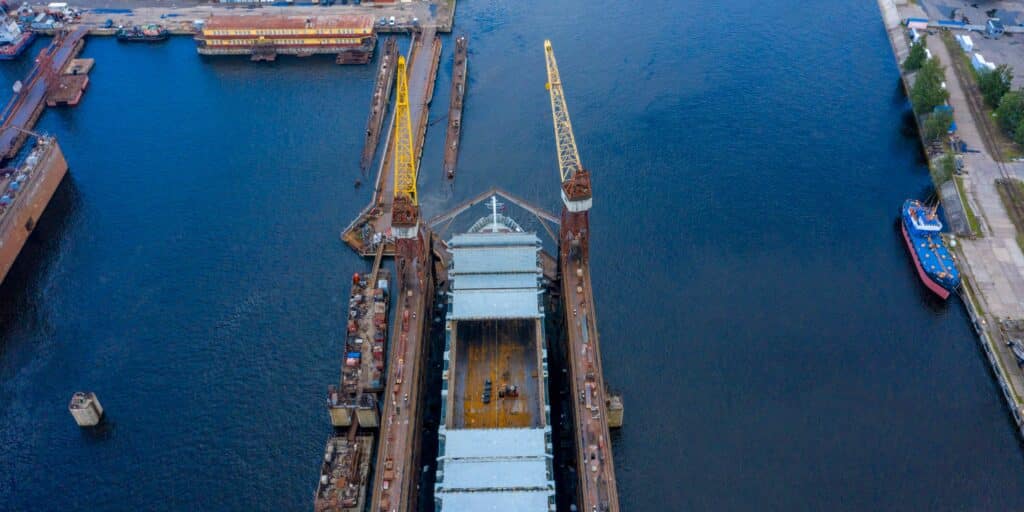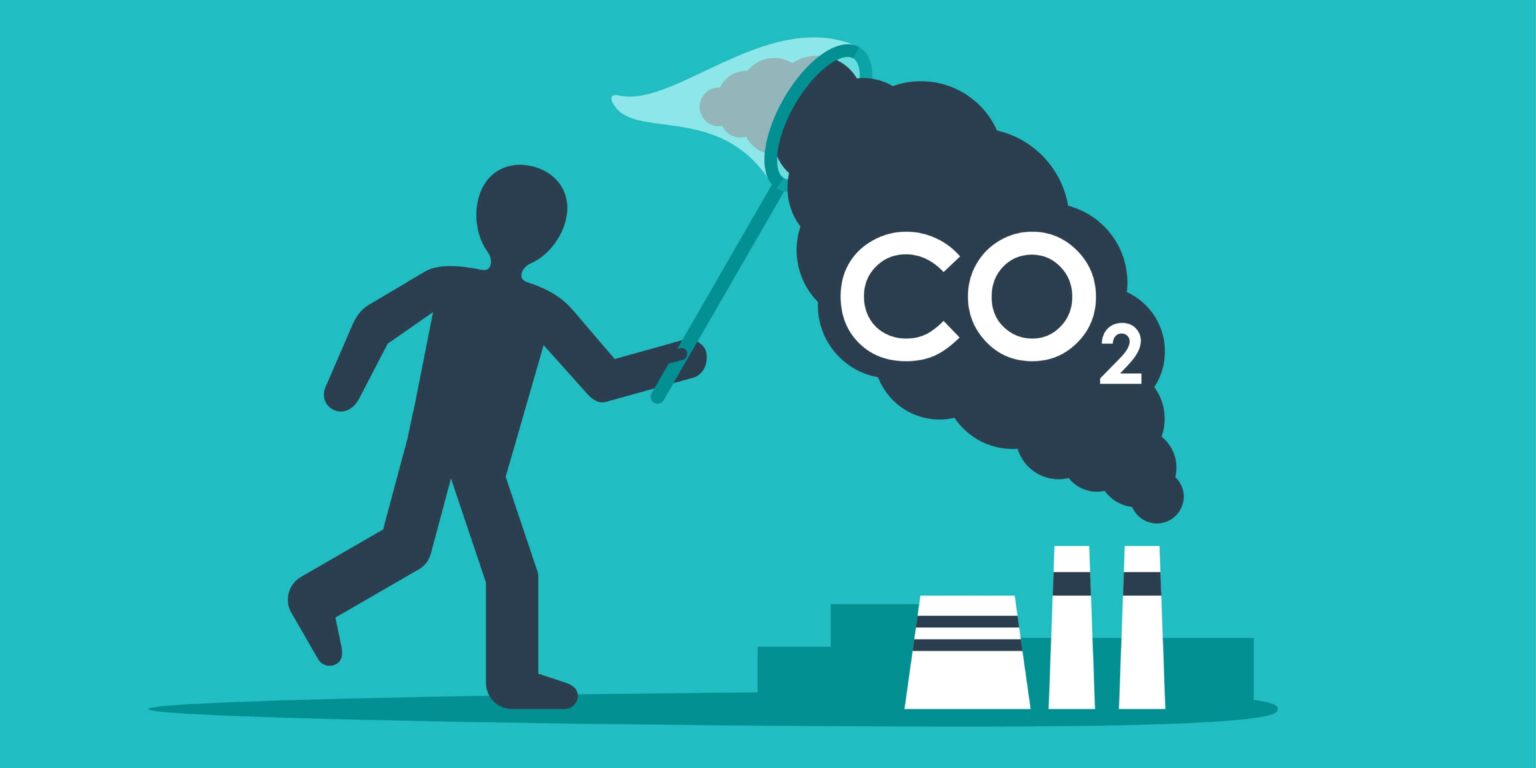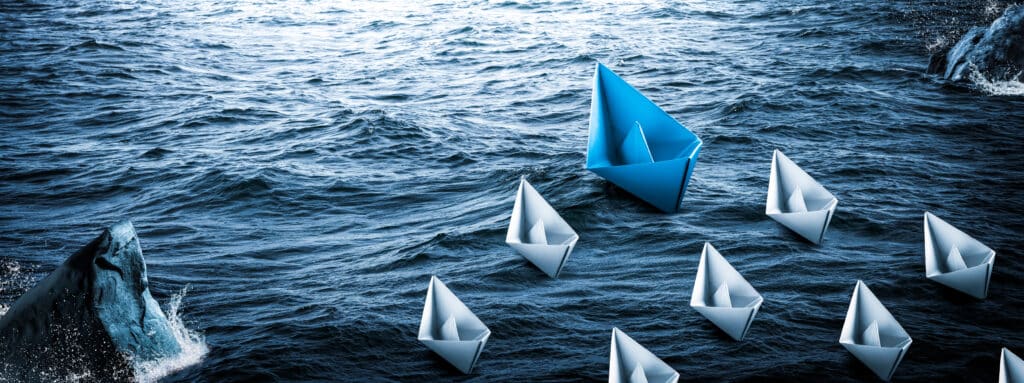Global trade is essentially based on shipping: around 80 percent of our goods are carried by sea. If maritime transport has a vital role in our economy, it nevertheless remains a source of pollution. Ships emit various particles in the air including carbon dioxide that contribute to global warming.
To reduce pollutants, international standards have been set for the decarbonization and sustainability of the world’s fleet. Companies are working on alternatives and new technologies to build green vessels. But with the increasing demand for freight, the transition to a cleaner industry has to happen faster than previously scheduled.
Understanding maritime decarbonization
The increase in global greenhouse gas (GHG) emissions is the main cause of climate change. Among the different types of pollutants produced by human activity, carbon dioxide (CO2) is emitted in the greatest quantity. It is found in the atmosphere after burning fossil fuels such as oil and coal.
The main culprit of this emission is transportation which includes trucks, cars, planes, and also ships. In 2020, the International Maritime Organization (IMO) released its Fourth Greenhouse Gas Study which found that maritime transport emitted 1,056 million tonnes of CO2 in 2018.
This represents 2.9 percent of global GHGs. The report forecasts a rise in the next decades with an increase of up to 50 percent by 2050. To counter the harmful effects of CO2 buildup, the solution is decarbonization. Limiting the quantities produced will indeed decrease the GHGs in the atmosphere. IMO identified short, mid, and long-term targets in its Initial Strategy to decarbonize the shipping sector. The goal is to achieve the following objectives:
- A reduction of carbon intensity by at least 40 percent by 2030 compared to 2008 levels.
- Raising this percentage to 70 percent by 2050.
- A reduction of total annual GHGs by at least 50 percent by 2050.
Paris Agreement adopted at COP21 also states the actions to be taken by signatory countries. The net-zero emissions by 2050 goal must be reached to limit the temperature increase to 1.5°C. In order to strengthen its targets, IMO has planned a revision of its strategy at the Marine Environment Protection Committee (MEPC) 80 in July 2023.
Strategies for a sustainable decarbonization
The shipping industry has already started to find solutions in order to meet the requirements of future regulations.

Alternative fuels
This group includes liquified natural gas (LNG), liquefied petroleum gas (LPG) methanol, ethanol, ammonia, hydrogen, or even biofuels. They all have one thing in common: they can significantly limit GHGs compared to heavy fuel oil. LNG is the solution that has emerged these recent years whether it be for container vessels, cruise ships, or bulk carriers. It also produces almost no sulfur oxides (SOx) and reduces nitrogen oxides (NOx). But as it is made with natural gas extracted from the earth’s core, it is also part of the fossil fuels.
Another disadvantage is that in case of incomplete combustion of LNG, methane, which has a greater global warming potential than CO2, can be emitted into the atmosphere. The carbon-free options which could be used by ships in the future are hydrogen and ammonia. However, the implementation of these new green marine products requires the development of bunkering infrastructures and value chains.

Hybridization and electrification
Some vessels of the world fleet already use an electric power system. Diesel generators provide electricity to propulsion motors which then move the ship’s propeller.
Emissions are reduced compared to a conventional system made of a main engine running on heavy fuel oil but they are still present. Indeed the diesel engines need to run during all the crossing to allow the ship to sail. A solution is the installation of batteries to store the energy.
Hybrid vessels use them and alternate with their combustion engines. Batteries can be additionally switched on in case of a peak in power demand. It results in a cut in fuel consumption and therefore, less GHGs. This configuration requires nevertheless the use of a combustion engine.
Fully electrified vessels are only equipped with batteries that are recharged at the port. This technology is for the moment fitted on vessels that sail short distances such as ferries. For those who go on the high seas, the batteries currently produced would be too heavy and not efficient enough. Fully electric propulsion allows the creation of technological innovations in the maritime industry like autonomous ships.
Energy efficiency measures
The first action taken by IMO to reach the goals of the Initial GHG Strategy is the introduction of the Energy Efficiency Design Index (EEDI) and the Ship Energy Efficiency Management Plan (SEEMP).
These measures were implemented in 2013 following amendments to MARPOL Annex VI dedicated to the prevention of air pollution from ships. The calculated EEDI of a vessel estimates the grams of CO2 emitted per transport work. New-built ships must meet a minimum level according to their size and type. This level is revised every five years to reach a 30 percent reduction factor by 2025.
To improve energy efficiency, SEEMP helps shipowners to control the GHGs of their fleet. This plan is specific to each vessel since it takes into account her particulars, routes, and other parameters. Several measures were then added over the years:
- Data collection system (DCS): ships are now required to record and send their fuel oil consumption. Once all data are collected, IMO issues an annual report.
- Energy Efficiency Existing Ship Index (EEXI): like EEDI it measures CO2 but the calculation is only based on the ship’s technical design and is applicable to existing ships.
- Carbon Intensity Indicator (CII) rating: it is calculated annually with the information collected from DCS and expressed in grams of CO2 per deadweight-nautical mile.
- SEEMP Part III: it is a document that helps companies to reach the required CII.
Carbon capture, utilization, and storage
Carbon capture, utilization, and storage, also abbreviated CCUS, is a succession of stages during which CO2 is captured, liquefied, transported, and then re-used or stored in wells. For the maritime industry, the capture of CO2 can be achieved with the help of the existing scrubbers fitted onboard vessels.
They are designed to remove SOx and Nox from the exhaust but can be modified for CO2 absorption. It is stored onboard and then discharged in a port of call. Liquid CO2 (LCO2) carriers are also being built to transport CO2 from one point to another.
Cargo tanks have been designed and made with new materials to be able to transport liquefied CO2 at high pressures and low temperatures. More and more ships of this type are expected to be ordered by shipping companies in the coming years. It is indeed one of the most effective solutions for sustainable decarbonization.

The challenge of decarbonizing shipping
IMO’s Initial Strategy required a diminution of carbon intensity by at least 70 percent by 2050. Its revision scheduled for July 2023 could instead require reaching net zero emissions to be in accordance with Paris Agreement.
For the shipping community, it means that alternatives will have to be found more quickly than expected. It is possible if all stakeholders work together to share knowledge and develop innovations.
The Getting to Zero Coalition, an alliance composed of 160 maritime companies, is working on the commercialization of zero-emissions vessels (ZEVs) by 2030 and the relevant shore facilities. Indeed for shipowners, one of the constraints for engaging the transition is the lack of terminals with appropriate distribution, bunkering, or storage infrastructures.
The industry must adapt quickly without compromising safety. This requires new processes and equipment to be created and consequently the update of regulations. Administrations have to modify their requirements to support sustainable decarbonization not only for new building ships but also for those already in service. The latter must undergo modifications such as engine power limitation or a retrofit. Some vessels that are too old may not be eligible for these conversions and will have to be scrapped sooner.
The modification of vessels implies that crews have to be trained to acquire the necessary knowledge for safe operations.
All of these measures for green shipping represent a significant cost for the maritime sector. To help European shipowners, European Union has agreed to include shipping in its Emission Trading System (EU ETS) from 2024. At least 20 million EU ETS credits (about 1.5 billion euros) will be allocated to maritime decarbonization.
Maritime innovations to achieve net-zero emissions
In this race to reach IMO’s targets, companies have developed new systems to reduce fuel consumption. Some of them rely on an element that has already been used as a means of propulsion in maritime history: the wind.
New types of sails have been created to be fitted on cargo vessels as a support to the main propulsion. The estimation of fuel savings for towing kites is between 10 to 40 percent. In addition to helping to GHGs limitations, kite systems offer several advantages: they use renewable energy, they are easily controlled from the bridge, and they lessen the workload on the engine.
Another innovation that uses a natural source of power is solar photovoltaic panels. They generate the necessary energy for the operation of the ship and the quantity in excess is stored in batteries. These systems can be combined with improved hull paints for less friction, a new rudder and propeller design, or a speed nozzle to lower emissions.
To improve the impact of transport, it is not only the vessels that have to face changes but the whole logistic chain. This can be done in particular through the implementation of digital technologies to decarbonize the shipping industry. Sinay developed intelligence-based Application Programming Interfaces (APIs) to monitor carbon footprint.
The CO2 API gives an estimation of the emissions produced by a vessel during its journey. By entering her name or her IMO number, the platform provides a response expressed in tons of CO2 emitted per TEU.
This tool is an aid for fleet management and for decision-making, route optimization, and the anticipation of engine technical issues which could lead to overconsumption.

The Future of Decarbonization Sustainability
The future of decarbonization sustainability holds immense promise as society continues to prioritize environmental stewardship and combat climate change. As we move forward, several emerging trends and innovations are poised to accelerate the transition to a low-carbon future.
Renewable energy sources, such as solar and wind power, are gaining momentum as viable alternatives to fossil fuels. These clean energy solutions not only reduce carbon emissions but also offer long-term cost savings and energy independence. The integration of renewable energy into various sectors, including transportation and electricity generation, is transforming the energy landscape.
Another key aspect of the future of decarbonization sustainability lies in embracing the circular economy. This approach aims to minimize waste and maximize resource efficiency by promoting recycling, reuse, and remanufacturing. By shifting away from the linear “take-make-dispose” model, businesses can reduce their environmental footprint and contribute to a more sustainable future.
Technological advancements also play a pivotal role in decarbonization efforts. From smart grids and energy storage solutions to electric vehicles and energy-efficient buildings, innovative technologies are driving significant progress in decarbonizing key sectors. Additionally, digitalization and data-driven solutions enable better monitoring, optimization, and decision-making, empowering organizations to achieve greater energy efficiency and reduce emissions.
As the global community increasingly recognizes the urgency of addressing climate change, opportunities abound for businesses and industries that embrace decarbonization sustainability. Transitioning to low-carbon practices not only helps mitigate environmental risks but also presents economic advantages, such as cost savings, enhanced competitiveness, and access to new markets. By proactively embracing these trends and innovations, we can build a sustainable future and safeguard our planet for generations to come.
Conclusion
If several options exist to decarbonize shipping in a sustainable way, they will have to be set up quickly to reach regulations requirements on time. With all these innovations, the maritime industry is going to live its fourth propulsion revolution.
Frequently Asked Questions about Decarbonization Sustainability
Decarbonization sustainability refers to the process of reducing carbon emissions and transitioning to a low-carbon economy in order to mitigate climate change and achieve long-term environmental sustainability.
Decarbonization is crucial in the maritime industry because ships contribute to global greenhouse gas emissions, particularly carbon dioxide (CO2).
By reducing carbon emissions from maritime transport, we can minimize the industry’s impact on climate change and promote a more sustainable shipping sector.
The International Maritime Organization (IMO) has set ambitious targets for decarbonizing the shipping sector.
These targets include a reduction of carbon intensity by at least 40 percent by 2030 compared to 2008 levels, a further increase to 70 percent by 2050, and a reduction of total annual greenhouse gas emissions by at least 50 percent by 2050.
The shipping industry is adopting various strategies for sustainable decarbonization.
These include the use of alternative fuels such as liquified natural gas (LNG), hydrogen, and ammonia, hybridization, and electrification of vessels, energy efficiency measures like the Energy Efficiency Design Index (EEDI) and Ship Energy Efficiency Management Plan (SEEMP), and the implementation of carbon capture, utilization, and storage (CCUS) technologies.
The future of decarbonization sustainability in the maritime industry involves the integration of renewable energy sources like solar and wind power, the adoption of circular economy principles to minimize waste, advancements in technology such as smart grids and energy storage solutions, and the use of digitalization and data-driven solutions for better monitoring and optimization.
These trends and innovations offer opportunities for businesses to achieve greater energy efficiency, reduce emissions, and contribute to a sustainable future.
Focus on data to make effective decisions
Discover our modules
Environmental Monitoring
Monitor air quality in real-time, be alerted when a threshold is reached & easily comply with regulation thanks to the automated reports.
Monitor water quality in real-time, predict and avoid water pollution & comply with regulations thanks to the automated reports.
Deliver a preliminary metocean analysis and the associated report in jut a few minutes.
You may also be interested by those others environment application :





